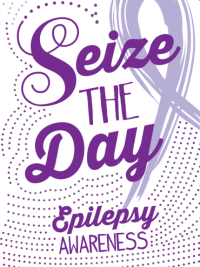November is Epilepsy Awareness Month. The current statistics tell us that 20-40% of those living with autism will develop seizures at some point in their life, with the highest rate among those who are more significantly impacted by ASD. As parents of kids with autism we spend so much time and energy pushing our kids to achieve beyond limitations and for some, the development of seizures can leave us reeling as it can be unchartered territory that we thought we had escaped. Epilepsy is a medical condition that produces seizures affecting each person in its own unique way. Some consider it a spectrum disorder, as with autism, in that there are many varieties of seizures and differences in how each person is affected. Approximately 1 in 26 people in the United States will develop epilepsy at some point in their lifetime. There are more people living with epilepsy than with autism, Parkinson’s, multiple sclerosis and cerebral palsy combined. Epilepsy is a chronic condition of the brain characterized by recurring seizures. Seizures can take the form of brief muscle jerks, lapses in attention (looks like daydreaming), unconscious behaviors like picking at clothing and full body convulsions. Anyone, anywhere, at any time can have a seizure. The frequency can vary greatly from once in a while to several per day. And the good news is that for many, seizures can be significantly managed with medication and/or diet and also be short-lived. SO what to do?
- Be informed. Be aware of the signs (epilepsyfoundation.org)Contact the Epilepsy Foundation for some great informationReassure your child that you are there to support them
Keep a diary that details the seizures, including time of day, type of movement, level of alertness and length of seizure.
Be sure to have information about your child’s seizures in his/her IEP under Health Care Needs. The type of seizure, protocols and medication used to treat the disorder should be noted in this section.
Also, under Support for School Personnel, add that the staff is to be trained in seizure protocols.
For more information about IEPs and becoming an advocate for your child, refer to Go for the Goal: A Parent’s Guide to Creating Meaningful IEP Goals at http://www.amazon.com/dp/B0094JEZWW If you don”t have a Kindle, no worries, you can download Kindle for PC and have it right there on your home computer. Remember that kids with autism provide us with so much blessing and with your guidance and love; they can reach their full potential. Warm regards, Stacey

